Try and tell me of an old dream, Reread Redux—a new version of the old scene!
Today’s Redux post will cover Chapters 11 through 13 of The Great Hunt, originally reread in this post.
All original posts are listed in The Wheel of Time Reread Index here, and all Redux posts will also be archived there as well. (The Wheel of Time Master Index, as always, is here, which has links to news, reviews, interviews, and all manner of information about the Wheel of Time in general on Tor.com.)
The Wheel of Time Reread is also available as an e-book series! Yay!
All Reread Redux posts will contain spoilers for the entire Wheel of Time series, so if you haven’t read, read at your own risk.
And now, the post!
Chapter 11: Glimmers of the Pattern
So I’m reading over my original commentary on this chapter, and I say to myself, “Self,” I say, “that was some fine commentatin’.”
Of course, I’m congratulating myself on adequately conveying my own feelings about a thing, so you know, take it for what it’s worth, but my point is, well, I think I summed up my thoughts on both Mat’s behavior and the ironic lordening of the Superboys just fine the first time, in a way that I don’t think can be improved upon, at least in terms of getting my feelings on the matter across. Ergo, I don’t really have much to add about this chapter except for some minutiae. Like:
Lying there in his blankets, [Fain] stared northward. He could not feel al’Thor, now; the distance between them was too great. Or perhaps al’Thor was doing his vanishing trick. Sometimes, in the keep, the boy had suddenly vanished from Fain’s senses. He did not know how, but always al’Thor came back, just as suddenly as he had gone. He would come back this time, too.
I’m assuming this is because Rand went into areas warded by the Aes Sedai occasionally in Fal Dara? Right at this moment, of course, it’s because Rand (and Loial and Hurin) just got sucked into an alternate Randland via Portal Stone, but barring the ward option, I’m not sure why Rand would have dropped off Fain’s Nemesis Radar™ in Fal Dara.
It was all of one piece, neither woven, nor dyed, nor painted. A banner, white as snow, big enough to be seen the length of a field of battle. And across it marched a rippling figure like a serpent scaled in gold and crimson, but a serpent with four scaled legs, each tipped with five golden claws, a serpent with eyes like the sun and a golden lion’s mane.
Not woven, dyed, or painted, eh? Maybe it was laser printing!
What? Well, you tell me, then!
Chapter 12: Woven in the Pattern
On the other hand, my original commentary on this chapter is hilariously wrong re: Egwene’s “lack of character,” considering that by the time I christened her “Ooh Ooh Girl” in, I think, TSR, she was one of my favorite characters precisely because of how much I identified with her dominant personality traits. Oh, silly past Leigh.
It’s probably worth noting, though, that at the time I was originally beginning the Reread, I hadn’t actually read WOT for years (even though prior to that I had read it multiple times). So a lot of it was me reading and going “oh yeah, now I remember that bit.” This is especially true of the early books. So maybe it’s not that surprising that I didn’t remember at this point how much I grew to like Egwene later.
But still: hilarious.
“Did Moiraine never explain any of this to you?”
“Never.” Egwene wished her voice was not so breathless. “She had… other matters to deal with.” Nynaeve snorted softly.
“Well, Moiraine has never believed in telling anyone anything they did not need to know. Knowing serves no real purpose, but then, neither does not knowing. Myself, I always prefer knowing to not.”
PREACH IT, SISTER VERIN.
“This is complete foolishness,” Nynaeve muttered. “I don’t feel like a flower. If anything, I feel like a blackthorn bush. I think I will wait by the fire after all.”
“As you wish,” Verin said. “Did I mention that novices do chores? They wash dishes, scrub floors, do laundry, serve at table, all sorts of things. I myself think the servants do a better job of it by far, but it is generally felt that such labor builds character. Oh, you are staying? Good.”
Verin is cracking my shit up in this chapter. I probably didn’t think Verin was quite as awesome the last time around at this point as I do now, my knowledge of her future badassery retroactively permeating everything as it does, but it’s not like that’s a bad thing, so whatever.
It helps, though, that Verin is genuinely helping Nynaeve here, not just making fun of her, even if Nynaeve doesn’t recognize it. A less compassionate person would have kept Nynaeve ignorant of her fate if she didn’t make Accepted, and then done a Nelson laugh when she gets stuck at the metaphorical kiddies’ table. So, as usual, go Verin.
And speaking of Black(ish) sisters hiding it really damn well:
Alviarin was as cool and businesslike as a merchant come to buy wool and tabac, surprised that Nynaeve was part of the lesson but accepting, sharp in her criticisms but always ready to try again.
I have to assume Jordan already knew at this point that she was not just Black Ajah but its leader, but wow, talk about giving no hint of it beforehand.
By the way, my speculation in the original commentary that maybe Alviarin was the one who let Fain out was wrong. As one of the commenters on that post pointed out, that doesn’t match up with the way she and Fain treat each other as strangers when she catches him in the Tower later on. If Alviarin had let Fain out in Fal Dara, he would have already known she was Black Ajah.
Also, we never do find out who the Yellow sister was in the party. I find it amusing that I am still slightly irritated by this.
…[Egwene] saw Rand sleeping on the ground, wrapped in a cloak. A woman had been standing over him, looking down. Her face was in shadow, but her eyes seemed to shine like the moon, and Egwene had known she was evil.
Girl, you have no idea.
Also, a new probably wrong theory to make up for the corrected Alviarin one: if Lanfear was standing right there when Rand and Co. got zapped into alternate Randland, does that mean she did the channeling to activate the Portal Stone and not Rand? That would seem to make more sense than supposing that Rand did something that later proves to be at least a little complex completely by accident, when at the moment he can barely do jack with the Power.
Speaking of: have another chapter!
Chapter 13: From Stone to Stone
“The many-worlds interpretation is an interpretation of quantum mechanics that asserts the objective reality of the universal wavefunction and denies the actuality of wavefunction collapse.”
*snort* Yeah, that article is no more accessibly written now than it was six years ago. Though I don’t think it had the cool Schrödinger’s cat illustration on it back then, so that’s something.
[Loial:] “Most of it sounded like this. ‘If a woman go left, or right, does Time’s flow divide? Does the Wheel then weave two Patterns? A thousand, for each of her turnings? As many as the stars? Is one real, the others merely shadows and reflections?’ You see, it was not very clear.”
Not to Loial, maybe, but the reference is pretty clear to me. Jordan probably understood the actual theory a lot more than I’ve bothered to, however, since I rather doubt that “skimming the Wikipedia article” counts as Having Done The Research.
I do understand it some, though, and it seems like the main difference between the scientific many-worlds theory and Jordan’s “worlds of if,” is that the physics theory stipulates that once a world has “split off” into varying realities, those realities can no longer interact with or affect each other. Whereas the fact that Hurin can still “smell” Fain’s party even in the other world proves that that is not the case in WOT. (Well, that and the fact that people can travel between them in the first place, of course.)
So, WOT’s version is definitely doing a little handwaving on this front, but, hey, the idea of being able to actually travel among the Many Worlds is obviously much more fun and story-generating, so nyah, physics!
Although, my original contention that the Portal Stones were “sort of a waste of good pseudoscience” still stands, really. Maybe I’m just not thinking it through, but mashing the many-worlds concept of the Portal Stones with the circular-time concept of the Wheel of Time seems… wonky.
Mainly because the idea of what causes the “worlds of if”—namely, an event or chain of events which proceeded differently than it did in the “main” world, i.e. the one we started from—suggests to my mind a distinctly linear interpretation of time. A woman goes left to make one world, right to make another, and the whole point is there’s no way to go back and undo the split once it’s in the past. But how does that jibe with the concept of circular time—that the Ages happen over and over again?
I dunno. Do you?
He reached for it—he was not sure how he reached, but it was something, a movement, a stretching toward the light, toward saidin—and caught nothing, as if running his hands through water. It felt like a slimy pond, scum floating atop clean water below, but he could not scoop up any of the water. Time and again it trickled through his fingers, not even droplets of the water remaining, only the slick scum, making his skin crawl.
In other news, I think this is the first time we get a real first-hand description of the taint, and wow, is that vividly gross. Also, a nice (gross) contrast to Egwene’s way less fraught fumblings for the same goal in the previous chapter.
Desperately, he tried to form an image of the hollow as it had been, with Ingtar and the lances sleeping by their horses, with Mat and Perrin, and the Stone lying buried except for one end. Outside the void he formed it, clinging to the shell of emptiness that enclosed him. He tried to link the image with the light, tried to force them together. The hollow as it had been, and he and Loial and Hurin there together. His head hurt. Together, with Mat and Perrin and the Shienarans. Burning, in his head. Together!
The void shattered into a thousand razor shards, slicing his mind.
I’m not sure, but I think Rand came reeeeeeally close right here to either burning himself out or killing himself stone Ded. And it’s neither the first or the last time, either. Talk about tap dancing on a land mine.
And that’s all I got for now, tin lizzies! Be well, and return forthwith a week Tuesday for more!










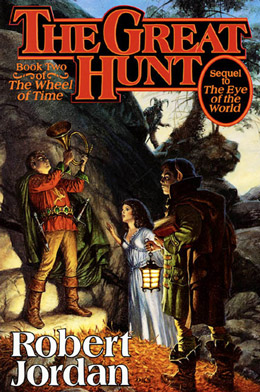
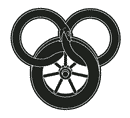

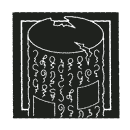
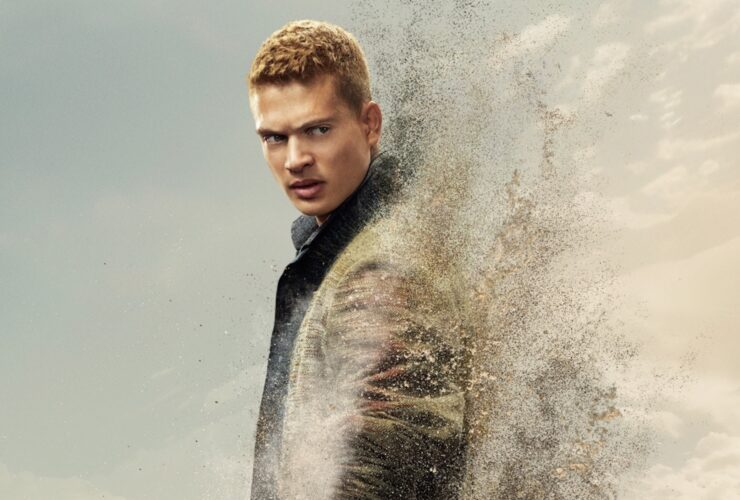
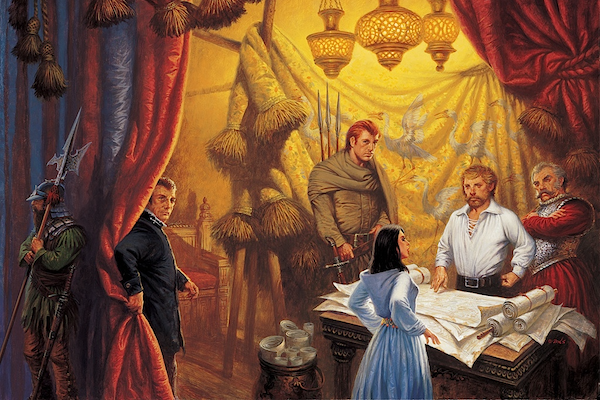


Regarding Rand disappearing from Fain’s Randsense: I always thought Rand was dreaming himself into TAR fleshily. We find out in book 5 that he had been doing so for quite a while and we see it pretty strongly in book 3
Hmm, my first thought was that Rand was in the Void but that might not actually make any sense especially if you can figure out the timing of all of it…the TAR explanation is probably better.
I wish I had more to say but it’s just fun to relive it.
I also agree with you on the mixing of time genres here regarding multi-timelines/circular timelines. Are all the timelines on the same turn of the Wheel? Are there infinite/near infinite wheels all spinning infinitely, and if the Dark One wins in ONE of the turnings of ONE of the wheels…that’s it for the whole shebang?
For me, I always assumed Rand’s “disappearing” from Fain’s senses (his Randar?? Randsense? we need to copyright something for this!!) occurred whenever he would assume the Void, since it is so close to actually touching the Source that maybe it offered a bit of protection. I like the idea that he may be dreaming himself fully into TAR, though
For whatever reason I had always assumed that Rand was dropping off Fain’s radar when he did the whole feed emotions to the flame enter the void thing. The other theories all make as much (or more) sense though.
Edit: And I see that others had the exact same idea and beat me to it. So let’s just say I agree. :)
I also assumed that Lanfear was indeed the one who activated the portal stone. Never was sure why she did, but her plans rarely made sense to me (except in a twisted kind of way).
Sign me up for one who believes Rand disappeared to Fain when he assumed the Void.
I also always assumed Lanfear had channeled them into the Portal Stone world, not Rand.
Quick note since I have time (will do a more thorough analysis wall of text later): even if it doesn’t make much sense, I was always convinced it was when Rand assumed the Flame and the Void that he disappeared from Fain’s radar. This is pretty much confirmed in the chapter when they get back to the real world and steal the Horn and dagger–throughout it Fain switches between sensing and not sensing him, and in that chapter Rand was continually assuming the void and leaving/losing it. The encyclopedia certainly seems to assume that’s the cause.
As for the circular Wheel vs. Worlds of If concept…maybe the Wheel somehow weaves all the possibilities into one, so that even as the worlds exist separately, what happens in one can still affect the real world and thus become part of the Pattern? And it’s the fact these possibilities change depending on choices made that causes the Ages to be woven “slightly differently” with each turning? Either that or there really is a different Pattern for each world, but the Wheel chooses the best balance from each for its weaving as it continues on…
And yeah, Lanfear totally did it. Aside from Rand’s issues with channeling and complexity of the task, Lanfear just seems too familiar with how the Stones work when she teaches him later. Plus that menacing glare, even if it was just in the Dream, fits too well with her immediately taking action to sweep Rand away right in that moment. In which case I’d guess proximity to the Stone when activated causes you to get caught up in the traveling, since otherwise she never would have brought Loial or Hurin along (as much as they ended up helping support her ruse of the helpless beautiful damsel in distress, there’s no way she could have known that).
The impression I got form the various “worlds of if” references in the story was that there was a Prime world, and the others were reflections. Not entirely real. In otherwords, the prime universe wasn’t prime because it was where the story was set, it was prime because it was PRIME. Its why the further away fromt eh prime world you get, the more translucent it looks. In other words, these aren’t really, REAL worlds. They are real the way a reflection is real.
That’s significantly different than the multiverse theory.
I think that Lanfear knew that the void would help Rand hide from Fain, based on the # of times she talked about utilizing it.
“The Oneness,” she said, sounding satisfied. She saw his questioning look and added, “That is what it is called . . . in some places. The Oneness. To learn the full use of it, it is best to wrap it around you continuously, to dwell in it at all times, or so I’ve heard.”
Wasn’t Lanfear’s whole point in the What If world was to get Rand to Channel? It’s been a while since I read this, but I seem to remember her egging him on to do something there. That’s why I assumed she was the one who channeled to activate the stone. It was just a means to an end.
Probably wrong though. Like I said, it’s been a while.
Before you mentioned wards woven by the Aes Sedai, I always assumed that Fain couldn’t sense Rand when the latter was doing his Void thing/channeling unknowingly.
Count me as another that always assumed that Rand using the Flame and the Void caused him to drop off Fain’s Randar. I think it is made more clear later, iirc. For all intents and purposes, he’s practically holding Saidin when he successfully assumes the Flame and Void.
I also believe it was Lanfear that brought them through the Portal Stone, though the description of Rand falling asleep while sensing Saidin seems to suggest otherwise. However, it is only possible to channel Spirit while asleep, and while that may be the only one of the Five Powers necessary to activate the Portal Stones, it seems unlikely that Rand did this on his own. I believe that Rand sensed in his sleep the activation of the Portal Stones, though other interpretations are just as likely.
Yeah, Rand disappeared from Fain when he used the void. We see this more clearly when he grabs the horn from under Fain’s nose.
I’m not sure how close Rand actually came to burning himself out when he tried to use the Portal Stone again and the void collapsed.
I had actually always assumed that Both A. Lanfear actually channeled them into the Other World the first time and B. That she wove some sort of trap around that particular stone on the other side so Rand couldn’t immediately teleport his little group away to who knows where before her little “find me and rescue me” scheme came into play.
“Mainly because the idea of what causes the “worlds of if”—namely, an event or chain of events which proceeded differently than it did in the “main” world, i.e. the one we started from—suggests to my mind a distinctly linearinterpretation of time. A woman goes left to make one world, right to make another, and the whole point is there’s no way to go back and undo the split once it’s in the past. But how does that jibe with the concept of circular time—that the Ages happen over and over again?”
Circularity and linearity aren’t mutually exclusive. Nothing says a line has to be straight — you use a single line to draw a circle.
The inhabitants of Randland think that time’s a circle, but it’s actually a sphere, composed of an infinite number of circles, arrayed like the lines of longitude around the earth. When you make a decision, your circle splits into two circles. Portal stones and the like allow you to hop to a different circle. And there are areas where the circles converge/lines cross–events of importance that affect all the different worlds of possibility. Ta’veren also pull multiple circles into convergence/crossing.
So, those circles are linear, but they keep reconverging (especially at the poles, which are things like the Last Battle). Your choices create new possibilities, but those possibilities ultimately reconverge and then separate again.
I too always thought Rand was holding the Void when he went of Fain’s radar.
I also think that Lanfear transported them. It is a good solid explanation, as opposed to Rand sleep-channeling them into the alter-world.
As to the nature of the alternate worlds, I agree with anthonypero @@@@@ 8.
So, if time goes in a circle, then a step to the right or left would make almost parallel circles that intersect at one point. With the ability to go round the chain via portal stones, I’m thinking it might be more of a doughnut of time.
Of course, later we find that the less likely a world was, the fainter it is. Perhaps the other worlds just don’t have the Pattern-fueled oomph to make it back to the step-right-or-left point against “I have won again, Lews Therin”.
What if Rand only disappears from Fain when he siezes saidin? That combined with possible wards in Fal Dara might explain why Fain never noticed the disappearances before then.
I also think Lanfear channeled the stone. This is too much her trap for it to simply be Rand stumbling through. Also, I sort of think Lanfear wants Rand to become a leader, and that’s why she brings Loial and Hurin. That or she wants to see if he can lead the group. Lastly, I think it’s interesting that the people who trusted Rand the last night travel with him. Perrin and Mat were nervous and stayed with the group, while Hurin and Loial didn’t mind Rand’s company.
One point from early in this section: Ingtar makes a point of telling Rand that he (Rand) will find the Horn of Valere, not Ingtar. This seems to at least show some change in Ingtar’s mentality. He’s not a darkfriend at this point, but he can’t trust himself with the horn.
@18 kind of on the same track, but what if it’s not saidin exactly but the Taint? Fain’s evil powers being in opposition to the Dark One, it makes some theoretical sense to me that the Dark One’s taint might actually be weirdly protective in this instance. But I don’t recall specific instances enough to know if it works.
I see WOT time flowing as a helical spiral where time is always moving forward so it passes through 7 planar points as it progresses forward, with each of the intersections being the finish/ start of the age. This way, each age is similar in entrance and exit, but the path is always different and thus require choices to keep the pattern moving forward. This design also allows the ages to cycle without having any more than distant legends to guide choices for those without any awareness of their former lives.
I think the Portal Stones were always deliberately underused so that every time they came back into the story it was a genuine surprise. It was a surprise twist when Rand used it in TSR, and even more of one when the bad guys used it to ambush the Galad Inquisition. I quite remember the dissonance of thinking ‘oh, right, Portal Stones are a thing’ versus Perrin’s ‘of course Portal Stones, duh’.
And I always thought Rand going invisible to the Nemesis Radar was him going all Void and channeling. The One Power supposedly wards you against evil (or so Moiraine said in book 1 when it was still very mystical), and the stated reason Saidin didn’t do that anymore was because of the Taint. But as shown later in the series, Shadar Logoth evil and Dark One evil REALLY don’t like each other. Actually, touching the taint might have cloaked him more than touching saidin.
Random insight moment: Regarding ‘opposites’ in Randland, like with Baelfire having an opposing weave, we’ve always assumed the True Power was the opposite of the One Power… but that was lacking, since the OP has 2 halves, Saidin and Saidar. The TP is singular. Until you remember Shadar Logoth. TP and Shadar Logoth are the equivalent opposites of Saidin and Saidar. Their relationship is even as equal and opposite. Saidin and Saidar repel but reinforce each other. TP and Shadar Logoth attract and mutually annihilate.
Count me among those who believe that the vanishing trick Fain refers to is Rand entering the Flame & Void. While Fain was in the cell in Fal Dara, Rand was frequently training with Lan. During those sparring sessions, Rand would use the Flame & Void technique.
Thanks for reading my musings
AndrewHB
aka the musespren
Was RJ a Zelazny fan. As the description of shadows of the original would match up with the way the Amber series worked.
There must have been two Yellow Ajah in the group.
Eg stumbles over two Forsaken the first time she Dreams. She is lucky that she survives long enough to learn what she is doing.
Count me in with those who assumed that Rand fell off Fain’s awareness whenever he assumed the Void and the Flame. Also with those who assumed it was Our Dear Friend Lanfear ne Mierin who switched Rand and co into the alternative history world. She makes attempts to get him to commit to her as Selene before she ever declares herself to be Lanfear – though she misses the best opportunity when Rand and co are stuck in Cairhien and he is looking for her and asking after her … but then, she always sees the main chance, but never the reality of his heart, does she?!?
I also always thought that Rands disappearing from Fains radar had to do with his using the Void. Like @@@@@ 7 said, I thought it was confirmed when Rand steals the horn from Fain. The way I remember it, Fain was asleep and did sense him there until Rand and Loial were away from there and Rand let the void go…
Re Chapter 11: Haha! Laser printing… *rubs chin* I suppose it’s highly likely, all considering…
I never really had that much of a problem with Fain and find he is an interesting character. With the exception of his underwhelming presence in AMOL, he’s an effective villain, spreading chaos and leaving very few (none?) unscathed when he passes through. However, his villainy is mainly of the puppetmaster variety, and for someone so powerful, I think there’s a disconnect of how we want him to be (a frontline, combative type of evil), versus how he is (an insidious and stealthy, almost virus-like entity). He is also almost never in the same place as our heroes, which contributes to the slinky, not-quite-important-yet-ever-present, feeling that doesn’t sit quite right with readers. From an objective standpoint however, his presence is felt throughout all the books, from the more blatant Two Rivers assault to his subtle corruption of Elaida.
Re Chapter 12: Wow! Alviarin showed up here?! Jordan really made the most out of his cast.
On a sidenote, one thing that is prevalent in the first three books that I think ended up misleading a large amount of readers (including me) is the focus on Rand, and to a lesser extent, Mat and Perrin. Even when we see Egwene’s perspective, she and everyone around her is constantly thinking about and preoccupied with the boys,. This tunnel vision takes over in the reader as well, and ends up obscuring just how important the female half of the cast is. Egwene herself is probably the next most important character in the WoT after Rand (and close to equal, at that). The Supergirls and their Treasure Hunt ended up having huge ramifications for the world of Randland including but not limited to: uncovering the Kin, building relations with the Sea Folk, rediscovering Traveling, and spreading knowledge of AoL weaves learned by Moghedien to One Power users across the continent.
Re Chapter 13:
Speaking of underwhelming, I am never sure how to feel about Lanfear, my Padan Fain if you will. She is one character who gets talked up a lot as being immensely powerful (and power-hungry), yet a lot of what she does has a futility about it since 1) I never felt she would actually convince Rand of aiding her plans in any significant fashion and 2) unlike the other Forsaken, I can’t recall any plans of hers that contributed to the disintegrating order of Randland. Her scene at the end of Fires of Heaven was the only time I truly felt she lived up to her reputation, and she was subsequently removed as a real threat for most of the series until the very end of AMOL when she shows up at Shayol Ghul.
Did they go to school here?
http://www.crecschools.org/our-schools/two-rivers-magnet-high-school/
I think I’m with the majority here in that I always assumed that Rand disappeared from Fain’s Randar when he assumed the Void, and as Macster (@7) pointed out, this is pretty much confirmed in the books.
Unlike the majority, I had always assumed that Rand had inadvertently channeled to operate the Portal Stone, but having read Leigh’s re-cap redux, and the comments, I’m convinced otherwise. (All right, I admit it, I was wrong! No need to get the Chair of Remorse!) Lanfear operating the stone makes much more sense. Not that I’m qualified to render an opinion, having missed what seems pretty obvious to me now, but my suspicion is that Lanfear had not planned to send Rand through the Portal Stone, but when she saw him fall asleep next to one, she improvised. I assume her plan was to get Rand in a place where she could have pretty much unfettered access to him for the purpose of sizing him up, or perhaps, as Davyd (@10) suggested, encouraging him to channel. Maybe she also wanted to find out how much of the original Dragon, if any, was lurking inside Rand. Hurin and Loial got swept up due to their proximity, but Lanfear just rolled with it. I also think that wcarter (@14) is right, that Lanfear wove a trap to make sure Rand would not be able to get back too quickly.
As for the “worlds of if,” I think anthonypero (@8) is exactly correct. Based on that concept, I disagree with Leigh’s contention in her original re-read (and her seconding of that here), that the Portal Stones ended up being a waste of good pseudoscience. Since the other worlds were just possibilities, and not “real” worlds, I don’t think there was a lot to do with them. In the end, the Portal Stones were not much more than another means to Travel, and perhaps see how horrible you might have been in an alternate life. I think that’s made pretty clear by the alternate world they ended up in – it seems that the Dark One won in that reality, but since that world was just a reflection of the Prime world, it had no effect on the Prime world.
Although there is evidence to the contrary, I still feel like it was Rand who inadvertently channeled himself, Loial and Hurin through the portal stone. IIRC, wasn’t it Thom who said his nephew channeled while asleep without knowing, and woke up with the whole house flattened?Maybe it was another character, but I do remember reading that particular passage. The fact that Rand fell asleep touching the Source makes me feel that is the correct interpretation, but Lanfear using it to her own ends also makes sense…
IIRC, wasn’t it Thom who said his nephew channeled while asleep without knowing, and woke up with the whole house flattened?
When Mat learns that Rand can channel, he talks about hearing a story from a merchant about a male channeler who flattened his village except his own bed to explain why he wants to stay away from Rand. It doesn’t have anything to do with Owyn.
@@@@@ 31, thank you!! I knew it was a main character who mentioned that, but I couldn’t remember exactly who
I just LOVE that we were so hookwinked by Verin in these early chapters.
The world of the portal stones – Not sure why but I’ve always thought it was TAR and none of that mumbly jumbly mind-numbing multi world thing. It was just Lanfear manipulating TAR. No?
The parallel world sounds a bit like TAR, but it isn’t the same thing.
Why doesn’t Loial know about the Stone near Stedding Tsofu that they use later in the book?
@33:
Later in the book, Rand uses the portal stone again to travel to Toman Head… and sees a bunch of alternate realities in the process. So, no, not just Lanfear messing with them.
So, extra commentary now: I agree, Leigh did a great job expressing herself the first time. Re: the lordening, it’s weird, part of me is annoyed and rolls my eyes at the trope and how it is employed, but the rest of me finds the irony funny (and still feels for the boys, especially Rand) so I give it a pass. Maybe it wouldn’t be so annoying if it didn’t happen from everyone they run into in these early books. A few times would be coincidence, but happening over and over just lampshades it, and personally I don’t think this is something you should call attention to.
Also, while Mat was totally up in my Kool-Aid at this point, I do have to agree that he was the token normal at this point and his reaction makes sense. After all, while obviously Rand will be angsting about this for the rest of the series, everyone else seems to take it in stride, even the women in his life. So if there’s all this animosity and distrust and fear re: channeling men, shouldn’t at least one of the characters close to Rand be displaying such things? Because as hard as it seems to believe someone who grew up with him could turn on him like this, having no one who’s a major character do so, after Jordan built up that this is the collective bogeyman of the current Age, would completely undercut his world-building and its realism. Unfortunately, the one Jordan chose to show this also happened to be one who was already in people’s bad books due to his annoying rogue nature or the Shadar Logoth dagger…
That said, I will say that as backhanded as it was (Rand was quite right to throw the rock), having Mat be stunned when he learned Rand didn’t flee Fal Dara after he learned he could channel because he wanted to help bring back the dagger, and then immediately start asking if he’s okay, was kind of touching.
I’d forgotten that detail about the banner. O_o For all we know, Leigh could be right, though I’m not sure the Second Age had things like our world has. Chalk it up to unknown Age of Legends technology I guess.
I love how even this early Verin is proving her awesomeness, but in ways much more subtle and quiet than later on. The speech about knowing vs. not knowing is a beautiful foreshadowing for her speech in TGS about Browns wanting to arm the world with knowledge. Also, how she got Nynaeve to agree to training was hilarious.
I had actually forgotten Alviarin appeared this early (this seems to be a common refrain on the Re-read!). Since I know how far Jordan planned things ahead, I would have to agree he already knew exactly who and what Alviarin was. Which just goes to show Jordan didn’t just know how to write obvious, over-the-top evil villains. In fact the whole point of someone like Liandrin (and Ba’alzamon) was to make us appreciate the subtlety of other Blacks and Forsaken later on. After all, for Darkfriends to have stayed hidden as long as they did, especially in the Tower, they had to have known how to hide their allegiance, so they couldn’t all be like Liandrin. (Though to be fair, as a Red she gets more leeway because her attitude fits the general bitchiness/bigotry of her Ajah and thus doesn’t stand out as a sign of the Shadow. Blacks among the non-Reds probably had to be more subtle, although I find it hard to believe anybody didn’t sense something was skeevy about either Temaile or Chesmal.)
I was always fascinated by the many-worlds theory, to the point I often include it or make reference to it in some fashion in my own writing, or at least when I play D&D. It is a shame Jordan didn’t go into it as much as he could but aside from it serving a story function and him having much more he needed and wanted to focus on, perhaps part of the reason he didn’t explain it better is because he actually couldn’t quite figure out how it worked in a world with circular time. But setting aside the ability to travel between them, it always seemed to me that it was actually somewhat like a Mobius strip, in that the combination of a world for every choice with a circular timeline meant each choice you made actually wound back on itself in order to keep the circle of the Ages connected. No matter the many different worlds created by choices, the Wheel still wove all of them together and back around, only to branch off yet again when new choices were made. It makes the Pattern even more complex than we realized, and explains even more why balefire is such a bad thing.
The description of the taint was always visceral to me. And Rand’s struggle to channel (and almost burning himself out) does a great job of explaining the difference between saidin and saidar well before we get it laid out in concrete terms in the scene where Elayne and Egwene try to teach Rand in TSR, or what we get in the Guide. What’s interesting is that at this point we don’t know if the way Rand describes channeling (or attempting it) is something only novices experience, or if it’s because of the taint. To have it turn out it’s like that for all male channelers and they all have to learn that balance, just shows how strong-willed male channelers have to be to even get anywhere, let alone not harm themselves. While this isn’t the reason most men have more potential Power strength than most women, I can’t help thinking there is still some sort of correlation.
@12 gadget: I think you’re right, that’s what Rand was sensing.
@14 wcarter: Interesting, I hadn’t thought of that. Sounds like her.
@15 Nerissa: That is a beautiful metaphor and explanation. I call it canon.
@18 cdrew: That’s the point, I think; only those who trusted Rand despite his channeling would stay close to him, and only they would trust him to lead them in the other world, so it all works out. Imagine how Mat would have reacted if suddenly swept to a parallel world where he was trapped with Rand! Sneaky (and very wise) Pattern. Also, good point re: Ingtar.
@20 FunBob: That also works!
@19 Ellisande, @21 SCM: Huh…the taint as a protection. What a novel, non-intuitive, and intriguing concept! Also, that is a rather brilliant insight in how it and Shadar Logoth act as True Power parallels to saidar and saidin.
@22 AndrewHB: Exactly.
@24 birgit: That, and that neither of them have a reason to kill her: Lanfear doesn’t even realize she’s a Dreamer till book 3 since right now she’s focused on Rand, and Ba’alzamon just wants to send her away to Seanchan to torment Rand; he otherwise considers her someone who is currently weak but will “never grow strong enough for Lews Therin to hide behind”.
@25 Aladdin_Sane: I always wondered why she did that. Best guess I could come up with was she wanted to stay away to make him “pine” for her before she deigned to show up again. Either that, or maybe she was wary of getting Ishamael mad at her for interfering in his plans, but that doesn’t really sound like her.
@27 givemraptors: Nice analysis of Fain. As for the girls, you have a point, but keep in mind that originally Nynaeve only left the Two Rivers to help bring the boys home and only pursued becoming an Aes Sedai later; meanwhile Elayne fell for Rand, and Egwene had once been promised to Rand, so it’s natural they’d be thinking only of him for a while. Around the time they move beyond that to their own goals and needs, the reader has also realized the female characters are important in their own right and have things to do which don’t have to do with the boys. It’s a nicely organic approach to plot as well as character.
As for Lanfear, her sending the Supergirls to Tear after Rand did help cause Callandor to be drawn, which led to Tear joining Rand, which was certainly part of Randland falling into chaos. Also, in TSR she was the one who brought in Asmo, and what he did with the fake dragon tattoos and what she did at Alcair Dal did end up leading to the whole Couladin/Shaido mess. But it’s true that was all indirect and unintentional on her part, since her plot was really still just about claiming Rand in the end. All that said though, I still love her as a character because even if she didn’t do much, Power-wise or plot-wise, she was always such a strong link back to the Age of Legends, and she represented so much of what went wrong and what could have been.
@29 TaiSharNedStark: I think you’re right. There’s no way Lanfear could have planned in advance for the Portal Stone, but once she saw Rand next to one, this coupled with her knowledge of the Stones (and that book about them) gave her the impetus to take advantage of the sudden opportunity. Which is probably good for the rest of the party, as otherwise who knows what she would have done to them. And while I think you’re right about Hurin and Loial, I do like the suggestion made above that once they ended up in the other world too, she used them to help see how good a leader/how much like Lews Therin Rand was.
Also, good point re: the shadowy (hah) nature of the world where the Dark One won.
@34 birgit: I always thought that was a Jordan goof. Although since Loial isn’t from Stedding Tsofu, that may explain why he doesn’t know about it; there probably aren’t any Stones near Stedding Shangtai. And without Ogier leaving the steddings or traveling the Ways, how could there be any way, in books or otherwise, for him to find out?
Long time reader, first time poster. (I know I’m a year late to the party on this section.)
I also believe Rand almost burned himself out. However I believe it was because he was trying to Travel, not use to portal stone.
What he describes is how women Travel. They make two points in the Pattern the same. Men Travel by boring a hole through the Pattern. I believe one of the Forsaken once mentioned that it would be disastrous for a woman to travel the way a man does, or vice versa.
Just something I noticed on my umpteenth re-read.
OK I do have a nit pick here and I don’t know if it’s been brought up in the thousands of comments I’ve read since I discovered the reread back in 2007, but if Randland is supposed to be somewhat-Europe and Seanchan is supposed to be somewhat-Africa, then how did Rand know the mane was like a lion? As far as I remember, lions are not indigenous to Europe-Randland, so maybe in Jain Farstrider’s book? It’s always bugged me just a little, how would they know what a lion looks like? Has that question ever come up?
*pokes head in* Pupxpert, I believe that would be because lions used to be indigenous to Europe (this is how they could be known and feature in the mythology of both Greece and Rome), but they were hunted to extinction/slaughtered for entertainment in the Coliseum. So Jordan is implying they similarly used to live in Randland, but don’t anymore. Recall the Lion of Andor also proves they had to be known in Randland in general, not just to Rand.